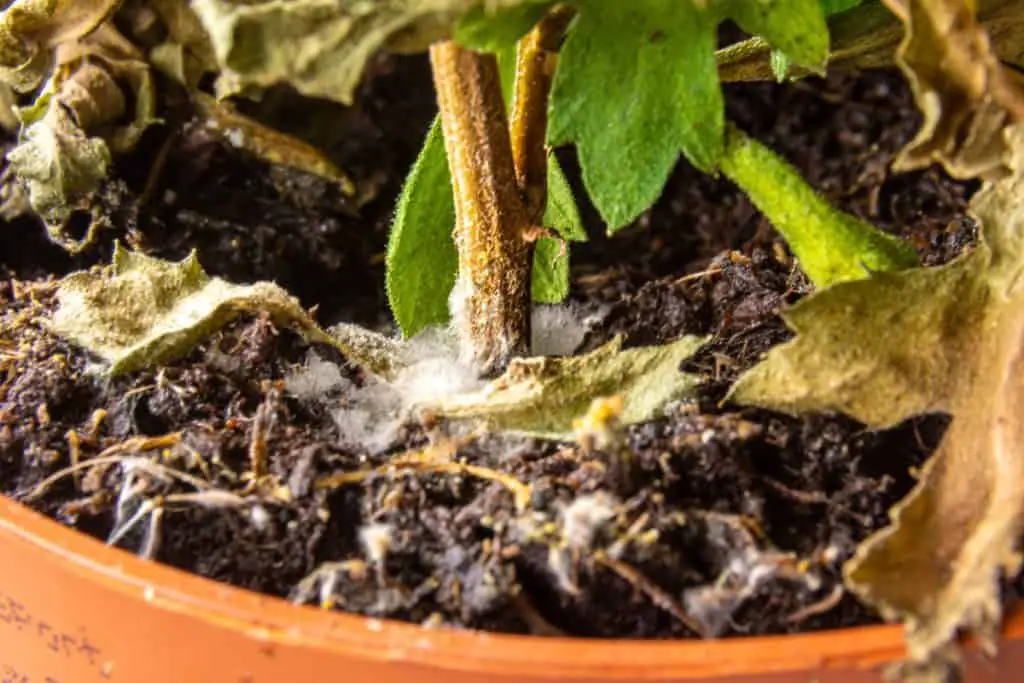Ferns make for excellent houseplants, and many popular varieties are easy to grow and maintain. Like any other potted plant, though, things can sometimes go wrong. One problem that can come up is that the fern develops a foul smell – which is bad for both you and the plant. So, why does this happen and what can be done?
The commonest cause of an unpleasant smell from a fern is waterlogged soil. This causes a musty smell, as fungi and bacteria grow in the low-oxygen conditions of the wet soil. A more obnoxious rotten-egg smell is a sign of root rot, which can threaten the survival of the fern if left untreated. Fortunately, there are simple steps for fixing these causes of unpleasant smells and preventing them from coming back in the future.
In many ways it is understandable that this can happen, because ferns thrive in moist conditions. They like humidity and moist soil, and so most fern owners take care to ensure they don’t dry out. But like any other good thing, too much water can be as much of a problem as too little.
The effects of overwatering
The problems start when soil becomes waterlogged. This means that the natural crumbly structure that normally has plenty of air spaces breaks down, and the soil becomes flooded. The good soil bacteria that usually help release nutrients from the loam of the soil cannot survive under these conditions, as they need oxygen to live. Instead, different species of bacteria and fungi that can survive without oxygen (in “anaerobic” conditions) start to multiply and take over. These are the microbes that produce a musty, bad smell.
Sometimes it is even possible to see a layer of slime or mold on the surface of the soil that smells unpleasant, giving a very clear sign that the soil is compromised.

Other indications that the soil is waterlogged are standing water in the tray beneath the pot, soggy soil that is claggy rather than crumbly, a heavy pot, and soil that does not readily absorb water when it’s poured onto the surface.
The fern itself can also give clues to overwatering. If the fronds are starting to droop despite the soil being wet, it suggests that overwatering is the problem. Similarly, pale or yellowing fronds can also show that the fern is suffering from something other than thirst.
Signs of root rot
Just like the good aerobic bacteria in the soil, the roots and rhizome of the fern also need oxygen. There is a Goldilocks situation where the soil is moist, but also sufficiently porous that there are plenty of air spaces within the structure of the soil. That’s the perfect conditions for ferns – they need water in a thin layer next to the air to allow them to absorb enough oxygen into the roots.
In waterlogged soil, the roots basically drown, or suffocate. The whole soil structure is filled with water and not enough oxygen can reach the roots. This causes them to die, and then the anaerobic bacteria can attack them. This is the source of the awful rotten-egg odor that can sometimes emanate from a sickly looking fern.
To confirm root rot, the fern must be taken from the pot and the root ball examined. If there are black roots that smell awful and collapse in a squidgy mess when touched, then they are rotting. The only way to solve this problem is to cut away the dead and rotting roots with a clean pruning shears or scissors, wash the remaining roots in fresh water, and then replant in fresh potting mix.
Other possible causes of smells
Although overwatering is almost always the culprit of smelly ferns, it is worth considering other possibilities. The first is the soil mix itself, which could have too much partially rotted compost or manure in it that is causing the smell. Most likely this would have been noticed at the time of planting, but it could give a similar odor to root rot. Another potential source of unpleasant smells are pest infestations. Although this is unlikely to be as pronounced as waterlogged soil, some pests such as nematodes and fern mites can damage the roots and fronds of the plants, allowing bacteria and fungi to cause rot at the sites of damage.
Finally, it is worth noting that some ferns have a natural scent. These are not normally unpleasant, but may be unexpected if you did not realize that you had bought a scented variety. Not many ferns that are popular as house plants are scented, with the notable exception of lemon button fern. As the name suggests, this has a lemony scent, but it is delicate and unlikely to be objectionable.

Lemon button fern
- Nephrolepis cordifolia (duffii)
- Evergreen
- Partial shade
- Height: up to 0.5 m
- Soil: acid or neutral. Moist, well-drained.
How to get rid of bad smells
The key to getting rid of bad smells is to correct the problems of overwatering. Here is a five step guide for how to fix overwatered ferns, but the simple truth is that repotting the plant is your safest strategy.
Even if you lay off the water for a while to let the pot dry out, the damage done to the structure of the soil means it will be hard to aerate again, and the bacteria and fungi that cause the problem will still be lurking in the soil waiting for their chance to re-establish themselves.
Fundamentally, when the soil is the source of the problem, the safest solution is to replace it. Follow the five steps and the smell should be eliminated.
How to stop ferns smelling in the future
Once the problem is fixed, you don’t want it to come back. The key is protecting against overwatering in the future.
The simplest measure is to only water when the surface of the soil (or top inch or so) no longer feels moist. When watering, give the water a chance to soak in before topping up with more, to be sure that it is draining freely.
In principle, you could try to stick to a strict watering schedule, but this is not a practical approach for most people, so some pragmatic steps that make life easier are a good idea. First, ensure that the potting mix used is well draining and has the right balance of components for your variety of fern. Second, make sure there is a drainage hole in the base of the pot that cannot be clogged by wet soil. Third, place the pot on a pebble tray so that any water that runs through the soil does not stand against the base of the pot. This has the added benefit of providing some additional humidity as it evaporates, which will help your fern to thrive.
Finally, you could consider some sort of automated watering system to keep the soil moist but not soaked. Self-watering containers, hydrospikes and humidity mats are all good options. Here’s a video of some in action:
With these steps you can avoid the problems caused by waterlogged soil, and decorate your house with ferns that are beautiful, healthy… and stink-free.
